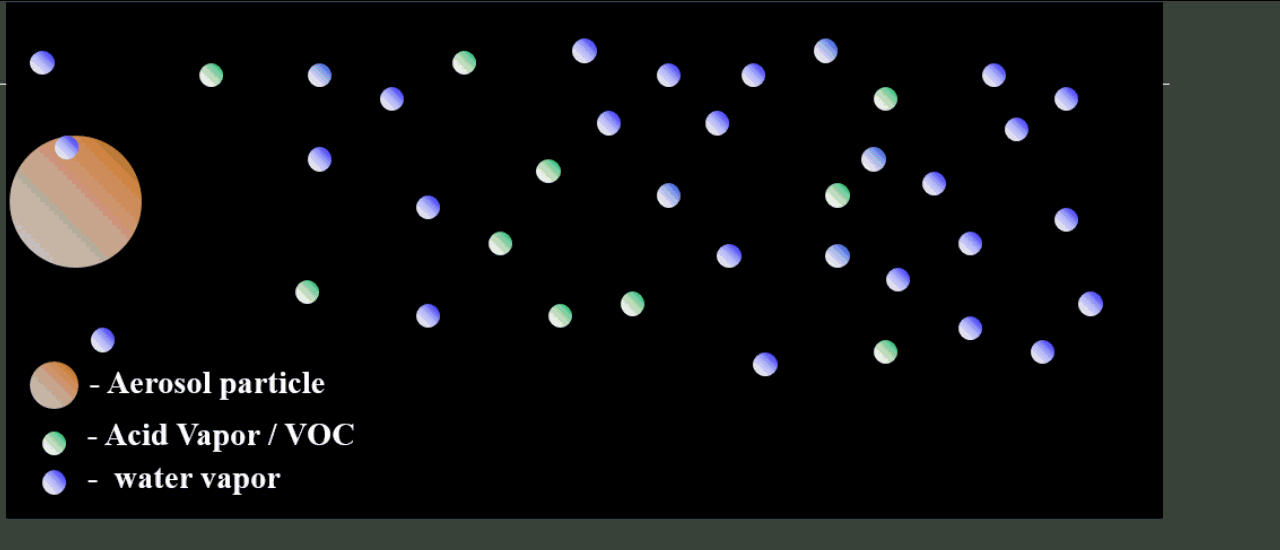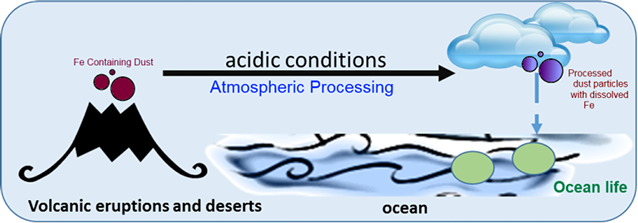
Linking Biological Activity of Ocean Diatoms to Atmospheric Processing of Fe-containing Minerals: Molecular Level Insights
Over the last several decades, it has been recognized that 30% of the world ocean is roughly comprised with high nutrient low chlorophyll regions (HNLC) where the phytoplankton primary productivity is limited by the bio-available iron concentration. It has been suggested that the major source of bio-available iron to surface waters is the deposited Fe-containing mineral dust that has been processed during their atmospheric transportation. Dissolution of iron in mineral aerosol dust can be linked to source material (mineral or anthropogenic), particle size, and mineralogy, and environmental conditions, i.e. pH, temperature and solar flux. The few earlier work on this subject has limited to model systems with only single component Fe-containing mineral (e.g. Fe2O3, FeOOH) that provide detail reaction mechanisms, yet does not add the complexity to the reaction medium to understand the synergistic effects from other metal ions and metal oxides in the mineral dust. In our research, we use proxies such as ilmenite (FeTiO3), that has enough complexity to mimic the mineral dust and yet simple enough to know the details of the reaction pathways. Here, we combine dissolution measurements from batch reactor studies with spectroscopy (ATR-FTIR, UV-Vis, DLS, XRD) and microscopy (TEM, SEM and SEM-EDS) to gain molecular level insights of these hidden surface phenomena.
Another interesting aspect of these studies is the link between dissolved trace metals, e.g. iron, and growth of phytoplankton. Numerous field and laboratory studies have shown that direct addition of iron, as dissolved iron solutions, enhances the growth of phytoplankton. Yet, one can pose the question “What would be the effect on biological activity and the growth of phytoplankton when Fe-containing mineral is directly added to the growth medium under environmental conditions?” Therefore, we conduct interdisciplinary research studies to address these questions using biological assays of phytoplankton coupled with simultaneous iron dissolution measurements combining cutting edge spectroscopic and microscopic technologies.

